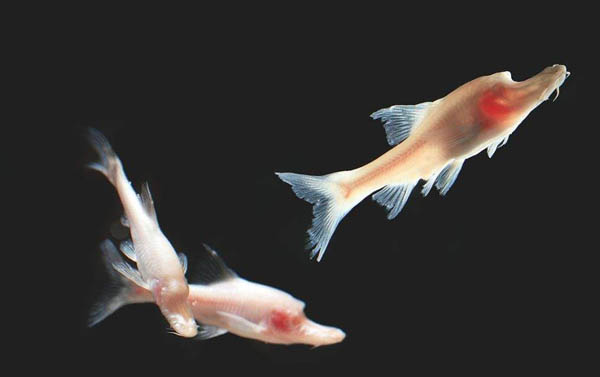The Latin name of naked blind barb is Typhlobarbus nudiventris, a fish of the genus Typhlobarbus in the family Cyprinidae.

The number of naked blind barb is extremely rare. The two specimens obtained later were kept in a ceramic water tank for several days. When at rest, it supports its body with the outer edge of the pectoral and pelvic fins and the tip of the lower lobe of the caudal fin, lying with its head raised, its snout facing the side and front, its nostrils open, and its nasal valves erected; when swimming, it always stays close to the wall of the tank, rarely in the middle of the container, sometimes it jumps up continuously along the wall of the tank, half of its body is exposed above the water, and its head, chest and abdomen are flat against the wall of the tank, and it slides into the water in a moment, swims several circles, and then returns to rest. It is quite sensitive to sudden vibrations, such as tapping the container, and it immediately moves away from the wall of the tank, fleeing east and west, and is very panic. Fecal examination found the shell of tin insects. It is speculated that it mainly feeds on bat feces.
The fish discovered in 1978 and reported as scientific news was the first blind fish discovered in my country. It clearly answered the question of whether there are blind fish in China. It caused widespread repercussions at the time, setting off a wave of searching for and studying blind fish, and since then, the research on cave fish and cave biology in my country has begun. Although the process of this research has become history, the scientific value of the blind abalone itself remains.
Due to the large amount of water extraction, the habitat of the blind gills has been destroyed, and even the basic conditions for survival have been lost.
It was listed in the list of rare protected animals in Yunnan Province in 1989, and listed in the Red Book of Endangered Animals in China in 1998, but there is no specific protection action.
It is listed in the second level of the "List of National Key Protected Wildlife in China".
Protect wild animals and eliminate game.
Maintaining ecological balance is everyone's responsibility!